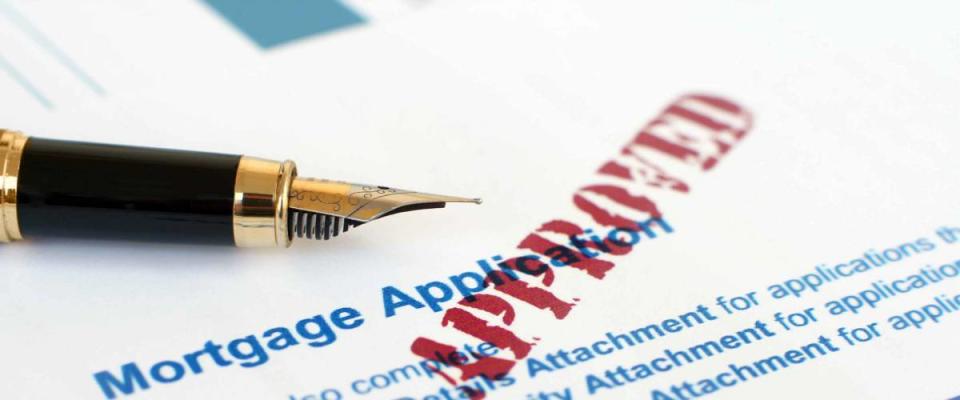How you can buy a home with a low-down-payment FHA mortgage

Many people consider homeownership part of the American dream — but can’t dream of landing a traditional mortgage. That’s why FHA loans exist.
These loans that are backed by the Federal Housing Administration are popular with first-time buyers and those with lower incomes. While you might need a credit score of 620 for a conventional loan, you could be approved for an FHA loan with a score of 500. And you could be eligible for a down payment of only 3.5%.
They’re not just for new buyers, either. You can use your FHA loan to refinance your mortgage or even repair an older home.
Sound appealing? FHA loans do offer some attractive features, but they may not be right for everyone.
How do FHA loans work?

Congress established the Federal Housing Administration in 1934 to help borrowers get a mortgage, especially those who would otherwise have trouble qualifying.
FHA loans are insured by the government agency. So while the loans are issued by private lenders, the FHA is taking on the risk. If you can’t pay your debt, the government steps in to pay the lender.
With less risk involved, lenders have the confidence to be a bit more lenient with their underwriting standards. Even if they don't have pristine credit, today's borrowers can secure FHA loans with historically low mortgage rates and lower down payments.
But the FHA limits how much you can borrow, based on where you live.
The maximum FHA loan for a single-family home in a low-cost county is $331,760. But in more expensive housing markets, that number will rise higher toward the upper limit of $765,600. The Department of Housing and Urban Development (HUD) offers a search engine to help you find the limit in your area.
Mortgage insurance
In return for the FHA’s promise to repay your lender if you go bust, you’ll have to pay a mortgage insurance premium (MIP). That makes FHA loans pricier than they might appear at first glance.
An FHA mortgage requires homebuyers to pay two insurance premiums: a one-time upfront premium, as well as an annual premium.
Upfront: The one-time premium is typically equal to 1.75% of the purchase price and can be paid in cash or financed as part of the mortgage.
Annual: The annual insurance is collected in monthly installments and added to your mortgage. It’s common to pay 0.85% per year, but the charge can vary from 0.45% to 1.05%, depending on the loan amount and whether the term is 15 or 30 years.
Another downside of FHA loans: These premiums never go away if you put less than 10% down on your home. You won’t stop paying mortgage insurance until the whole loan is paid off, you refinance into a non-FHA loan or you sell your home.
If you put more than 10% down, you’ll have to pay insurance premiums for no more than 11 years.
Type of rates
Like other home loans, FHA mortgages can be either fixed- or adjustable-rate loans.
With fixed-rate loans, your interest rate won’t budge, so your mortgage payments will be predictable throughout the entire life of the loan.
With adjustable-rate mortgage loans, or ARMs, the interest will move along with a benchmark index rate, like the prime rate. So while these types of loans may have lower rates to start, they could increase over time.
Types of FHA loans available

If you decide an FHA loan is your best path to homeownership, research the type that will get you into the home you want at a price you can afford.
FHA 203(k) loans
If you’re buying a home that needs a few upgrades, a 203(k) loan will help fund your home — and renovate it — with a single mortgage. These loans have two plans:
A limited or streamline 203(k) loan has less paperwork and an easier application process for repairs or improvements, but caps the cost at $35,000 or less. This program also requires that your home still be livable during the renovation.
A standard 203(k) loan will take a bit more paperwork but can apply to any improvements that cost $5,000 or more. Unlike the limited program, you can finance up to six months of your mortgage payments if you need or want to live outside the home during construction.
Home Equity Conversion Mortgage (HECM)
A HECM is the FHA’s reverse mortgage, and it allows seniors to withdraw equity from the home into a fixed monthly payout or a line of credit.
You also can use this program to purchase a new primary residence, as long as you have the cash to pay the difference between the HECM proceeds and the price of the new home.
To be eligible for an HECM, you must be 62 years of age or older, have the home as your primary residence and have significant equity in it (or own it outright), not be delinquent on any federal debt and take part in an information session given by an approved HECM rep.
FHA Energy Efficient Mortgage (EEM)
The EEM can help finance energy-efficient improvements to an FHA-insured home by rolling the costs of these green renos into the loan.
To qualify under FHA rules, you need a qualified energy assessor to complete a report on potential improvements to the home. The improvements also have to be “cost-effective” to be approved.
The FHA limits the amount of money that can be added to the loan for these types of improvements. The limit is based on the energy report, your area’s median home price or the national conforming mortgage limit — whichever ends up smaller.
FHA Section 245(a) loan
The program is known as the Graduated Payment Mortgage and is best for borrowers who expect their income will increase over time.
Your monthly payments start out small and gradually increase alongside your hopefully rising wages. After a number of years, the payments level off.
How to qualify for an FHA loan

The FHA’s goal is to keep homeownership within reach for people of all income levels, including first-time homebuyers. Compared to conventional loans, FHA loans are a bit easier to qualify for, but there are some conditions.
The right property: To start, the loan must be financing your primary residence, and the property has to be appraised to ensure it meets HUD property guidelines.
Bankruptcy buffer: If you have a bankruptcy on your record, you’ll have to wait up to two years to apply for an FHA loan or three years if you experienced a foreclosure.
Decent credit score: To be eligible for that 3.5% down payment, you’ll need a FICO score of 580 or higher. If you can afford a 10% down payment, you could be approved with a score as low at 500.
Steady employment: There is no minimum income threshold to qualify for an FHA loan, as long as you can show that you can make your payments. So the lender will still want to see pay stubs, federal tax returns or bank statements.
Debt-to-income ratios: The amount you spend on your monthly payments should be manageable compared to your gross monthly income. Lenders don’t want to see that number exceed 31%, and it shouldn’t be higher than 43% when it includes all your debts (including things like car loans and student debt). Some lenders may be willing to accept a slightly higher ratio, however.
FHA versus conventional mortgages

Because conventional mortgages aren’t insured by the FHA, the lender assumes more of the risk, so qualifications will be stricter.
For starters, you’ll need a better credit score, likely 620 or higher. Expect a higher income threshold and to put more money into a down payment.
Some lenders will let you put as little as 3% down on certain conventional mortgages, but you may need a great credit score and deep pockets to inspire that much confidence. A minimum of 5% or more is common. You'll need to save up, maybe in a high-interest savings account.
If you can’t come up with a 20% down payment, you’ll have to pay extra for private mortgage insurance. That typically adds 0.5% to 1% of your total loan amount to your annual costs.
Not fun, but it may not last as long as the mortgage insurance premium on an FHA loan.
How to get the best deal on an FHA loan

You can find FHA-approved lenders among big banks, credit unions, smaller community banks and independent lenders. You also can ask a mortgage broker to help you with the search.
Whether you decide on an FHA or conventional loan, you’d do best to shop around. Some lenders set stricter guidelines, harsher fees or higher interest rates, so you’ll want to gather those details as you search for a match.
A little comparison shopping can make a big difference when you're looking for a mortgage. Borrowers who get five mortgage rate quotes save an average of $3,000 more than those who get just one quote, a Freddie Mac study found.
Shopping around also works well to reduce some of the other costs of homeownership, like to find the best rate on homeowners insurance.

 Yahoo Sport
Yahoo Sport 





































